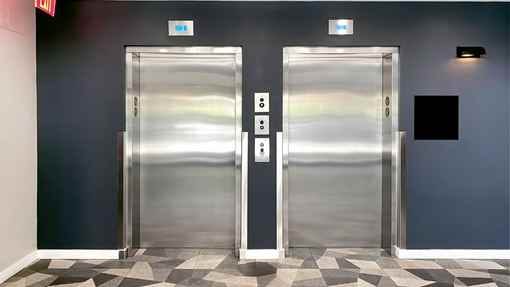We Maintain Lifts with Precision: Ensuring Security and Performance
We Maintain Lifts with Precision: Ensuring Security and Performance
Blog Article
Looking Into the Globe of Elevators: Common Concerns Dealt With by Different Lift Devices
As we browse via the upright transportation systems of modern structures, lifts stand out as an essential element of our everyday lives. From hydraulic lifts to grip systems and machine-room-less layouts, each lift kind comes with its set of typical concerns.
Hydraulic Lifts
Hydraulic lifts, often preferred for low-rise structures, use fluid stress to regulate the movement of the lift vehicle (lift repair companies). This device entails a hydraulic pump pressing oil right into a cyndrical tube, creating the lift to move in the preferred direction. While hydraulic elevators are recognized for their silent and smooth procedure, they do feature their very own collection of common concerns
One common issue with hydraulic lifts is oil leakage. The seals in the hydraulic system can wear over time, bring about oil infiltration. If left unaddressed, this not only produces a mess however can additionally influence the elevator's performance. In addition, problems with the control system, such as malfunctioning shutoffs or a malfunctioning pump, can create disruptions in the elevator's movement.
Routine upkeep and punctual repairs are necessary to ensure the smooth performance of hydraulic elevators. By resolving these usual problems proactively, building proprietors can lessen downtime and make certain the safety and security and effectiveness of their vertical transport system.
Traction Elevators
When considering upright transportation systems in structures, an additional usual kind other than hydraulic elevators is the traction elevator. Grip elevators run utilizing a system of ropes and weights that relocate the elevator vehicle by grasping onto the hoist ropes. This mechanism enables smoother and faster upright transport contrasted to hydraulic systems.
One of the usual concerns encountered by grip lifts is rope wear. The constant motion of the ropes within the traction system can result in tear and use over time, possibly triggering the elevator to malfunction or come to be unsafe for use. Normal examinations and maintenance of the ropes are necessary to make certain the lift's correct functioning and security.
One more concern that traction elevators might experience is associated to the control system. Problems with the control system can cause problems such as erratic motion, delays in action times, or even full closures. Routine screening and maintenance of the control system are crucial to avoid such problems and ensure the elevator's dependability.
Machine-Room-Less (MRL) Elevators

One of the crucial components of MRL elevators is the small gearless traction device that is mounted within the hoistway. This machine efficiently drives the lift cars and truck without the need for bulky devices found in typical grip lifts. Additionally, MRL lifts typically utilize a weight system to stabilize the cars and truck, further boosting their power efficiency.
Despite their benefits, MRL elevators may deal with challenges related to repair and maintenance as a result of the confined area for equipment setup. Availability for servicing elements within the shaft can be restricted, calling for specialized training for service technicians. Appropriate maintenance timetables and regular assessments are essential to make certain the ongoing smooth procedure of MRL elevators.
Overloading and Weight Restriction Issues
Overloading and weight restriction concerns are important worries in elevator operations. Lift makers style raises with particular weight abilities to ensure traveler security and devices longevity.
When lifts are overloaded, it places excessive stress on the motor, wires, Source and other components, possibly creating failures or breakdowns. If they discover excess weight, safety mechanisms such as sensing units and overload sensors are in area to avoid lifts from moving. In addition, surpassing weight limits can cause boosted energy consumption and deterioration on the elevator system.
To alleviate overloading problems, constructing managers ought to plainly display weight restrictions in elevators and inform occupants on the value of adhering to these limitations - lift repair companies. Routine maintenance checks by certified professionals can also help make certain that elevators are running within risk-free weight specifications. By addressing overloading and weight limit problems proactively, building proprietors can improve elevator safety and security and effectiveness
Electric System Failures
Exceeding weight limits in elevators can not only lead to mechanical issues however additionally possibly add useful reference to electrical system failings within the lift framework. Electrical system failures are an important concern in elevator operation, as they can create unanticipated closures, malfunctions, and even safety dangers. One usual electrical issue is the overheating of parts due to excessive present circulation triggered by straining the elevator beyond its capability. This can bring about harm to the wiring, control, or electric motor systems, resulting in costly repair services and downtime.
Regular upkeep and inspections are critical to determine and address prospective electric issues without delay, making sure the safe and reliable procedure of elevator systems. By sticking to weight limitations and conducting routine electric system checks, building owners can minimize the risk of electrical failings in lifts.
Final Thought

Hydraulic lifts, usually preferred for low-rise structures, utilize fluid stress to manage the movement of the elevator automobile.When thinking about vertical transportation systems in buildings, another usual type aside from hydraulic elevators is the grip lift. Grip lifts run using a system of ropes and weights that move the elevator car by grasping onto the hoist ropes. Unlike typical elevators that need a different machine space to house the tools, MRL lifts integrate most of the parts within the shaft, click for more info eliminating the requirement for a committed device area.In conclusion, lifts face common issues such as hydraulic malfunctions, traction system failures, and electric system troubles.
Report this page